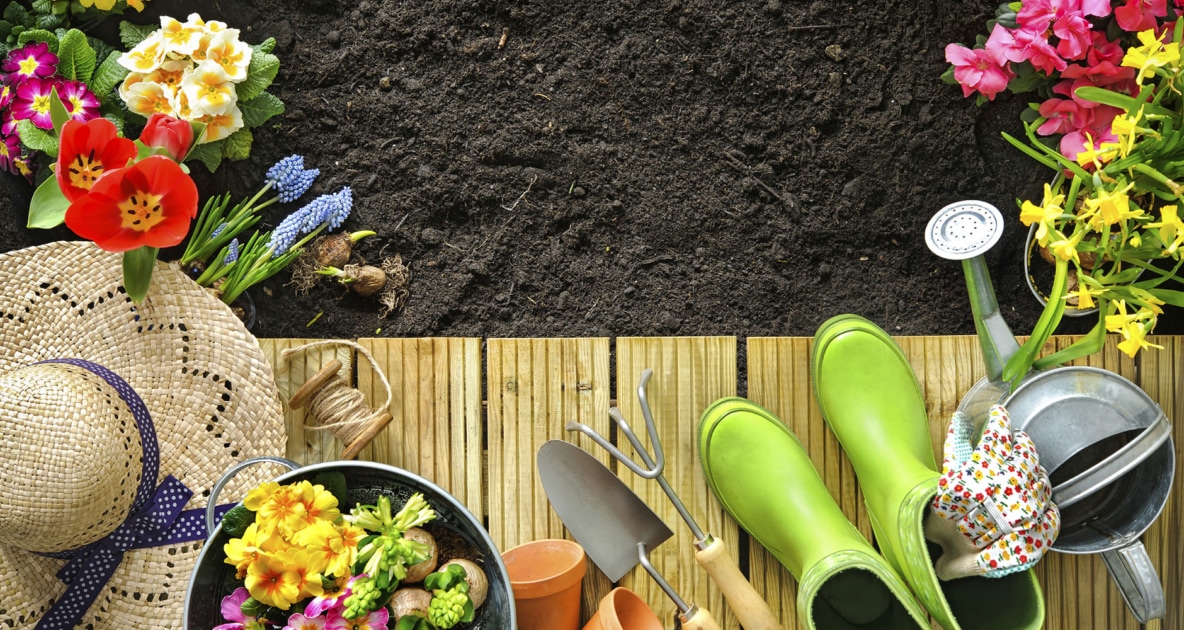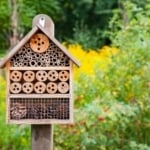5 Popular Gardening Myths Debunked
Check out this list of common gardening mistakes and misconceptions.

When it comes to gardening, much of what we know spreads through word of mouth – parents teaching their children, or friends and neighbors sharing their favorite gardening tips. While this is a great way to learn to grow, it also means that there are plenty of gardening myths that may or may not help you with your gardens.
Here’s a look at some of the most common gardening myths and misconceptions and whether or not they hold any truth.
Myth 1: All Vegetables Need Full Sun.
The common belief is that vegetables need full sunlight from dawn till dusk. However, most vegetables will do fine with eight hours of sunlight per day. Some, such as eggplants, squash, peppers, and tomatoes, will do well with six hours of sun, while crops like onions, carrots, peas, broccoli, and cauliflower will thrive on even less.
Myth 2: You Can Only Divide Perennials in the Spring and Fall.
It’s true that spring and fall are the best times to divide perennials, but they’re not the only times you can do it. When you divide plants in the spring, they’ll have plenty of time to recover before the hottest part of the year. In the fall, plants will soon be going dormant, which means you won’t have to worry about providing shade or extra water for much more than a week or two. If you’d like to give summer transplanting a try, just remember that you’ll need to give them a little extra care. Keep your transplants well watered and if necessary, provide them with some protection from the worst of the summer heat until they’re established.
Myth 3: You Should Change Your Potting Soil Every Year.
Some gardeners worry that potting soil only contains enough nutrients to keep plants healthy for one growing season. However, most types of potting soil will stay rich enough for at least a year or two. If you’re worried that your old potting soil is running low on nutrients, simply work a few handfuls of compost into the pots at the start of each year to keep your plants going strong. The only time you need to worry about replacing potting soil entirely is if you suspect a soil-borne disease problem.
Myth 4: Before Planting Annuals, Pinch the Blooms Off.
This myth stems from a very real phenomenon called transplant shock, which happens when you disturb or damage the roots of transplanted annuals and perennials. You can avoid transplant shock by trimming away the blooms and a large portion of the foliage so that the plant can devote more energy to rebuilding its root system. The problem is that many gardeners believe that newly purchased annuals and perennials should be pinched or pruned before planting. However, the potted plants from your local garden center should have a strong, healthy root system. Pinching the blooms from pots of pansies and petunias doesn’t encourage growth – it just means that you’ll wait longer for new blooms to appear.
Myth 5: Plants Rated for Extreme Hardiness Zones Will Thrive Anywhere.
So you’re a Zone 5 or 6 gardener, and you’ve just spotted a lovely perennial that is rated for Zone 2 temperatures. That means it should not only survive but also thrive in your climate, right? Not necessarily! No matter what perennials you choose, they all have a variety of needs – not just temperature, but also soil type, water requirements, humidity, sunlight, and more. Some of those super-hardy Zone 2 or 3 perennials may not survive in Zone 7 simply because they require ground temperatures to drop extremely low, or because they need a longer winter rest period. Plants that thrive in Arizona may not survive in Florida because even though the temperatures are similar, there are vast differences in soil structure and humidity.
Myths are almost as plentiful as weeds in the gardening world. Put these myths to rest so that you can save money, plant with greater flexibility and enjoy healthy, happy gardens!
Join the Discussion
What myths have you heard or are wondering about?
Which advice do you feel is good gardening tips?
Related Articles
Watering Your Garden During Drought Conditions
How to Make Fertilizer Tea for Your Plants
8 Best Homemade Natural Fertilizers

Amber Kanuckel
Amber Kanuckel is a freelance writer from rural Ohio who loves all things outdoors. She specializes in home, garden, environmental, and green living topics.






Re: Mums – the handed down info I have, when they start blooming in spring/early summer is to dead head the blooms as they die back. Then in fall, after the last bloom, cut the stems to 6″ above the ground. Then in the following spring, the new shoots show up close to the cut (dead) stems, which you can snap down close to the ground when the new shoots are about 3″ – 4″ high. I’ve done this for the last 30 yrs & it always worked for me, if you have healthy strong plants to begin with. Good luck!
Believe you are cutting too short. I don’t cut back in fall at all, leave as is for some protection during winter and then cut off when new growth appears. Let grow to about 12 inches then cut in half and keep cutting back to this hight until about the second week in July and then just let them do their thing.
Help with mums or chrysanthemums(sp) I cut them down to less than an inch at the end of the fall season and frost is on the pumpkins. In late spring I cut them again, about 1 to two inches from the ground. They did not bloom last year. They are growing fast along with all the other plants in the flower bed. Should I cut the buds off or trim them again before the fall season when I want them to be in full bloom? Please help with any and all suggestions FYI, The small garden is full of rose moss, marigolds, wave petunia’s, water lillies and more. I water each day, and fertilize with Miracle Gro once a month. Lots of woodchips to retain moisture through the hot, Kansas summers. Sincerely,
Amateur gardner.
Susan, you’re 100% correct. I’ve heard this called “mulch volcanoes,” where people pile mulch up high on a tree trunk. This causes all kinds of problems — it softens the bark on the tree trunk, making the tree much more prone to disease, it causes the roots to grow up into the mulch as they try to get a little bit of air, and it can sort of smother the tree. This is true for many shrubs, also.
Ideally, mulch under trees and shrubs should never be more than 3 inches thick, and it should be kept away from the tree trunk itself.
Love the articles from Farmers Almanac! Thanks for these helpful ideas. I was hoping it might address the myth that every spring the trees in our yards should be surrounded with a thick pile of mulch that goes right up the trunk. Could you explain that this is not necessary or helpful, and if you like the aesthetic at least you shouldn’t smother the trunk? Thanks! Keep up the good work!
I like the item about singing or talking to the plants, i heard that before. I have some flowers in flower boxes and they are not doing well i will try that.
Was glad to hear a couple of them especially the one on sun needs thanks